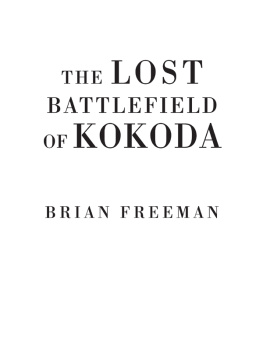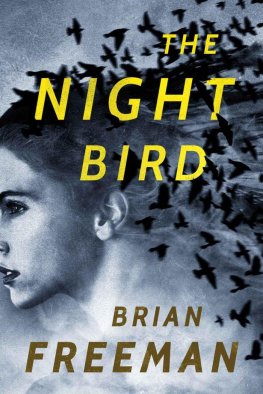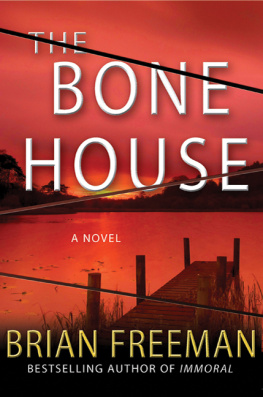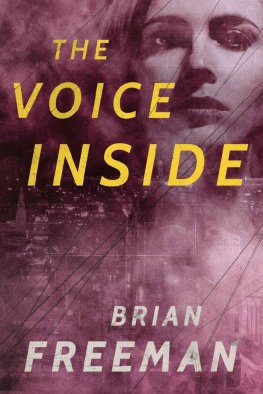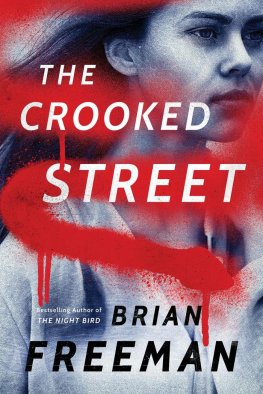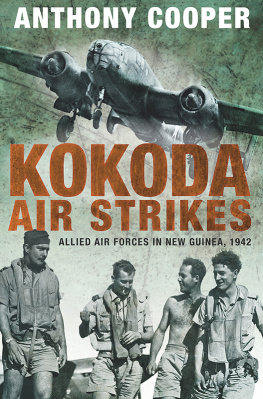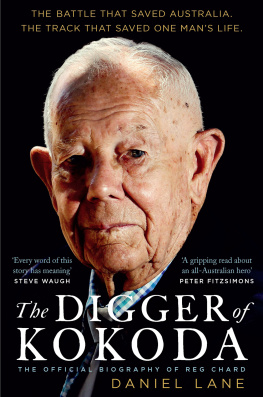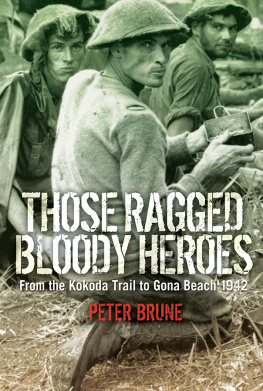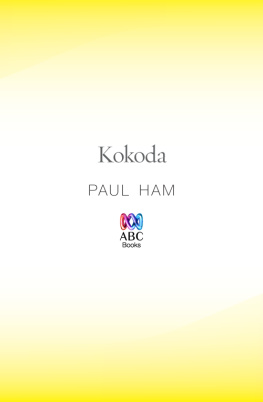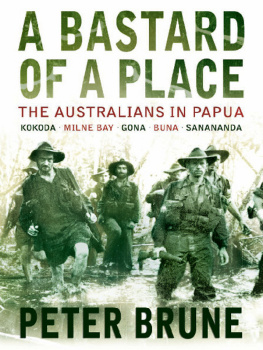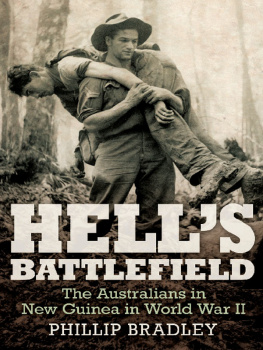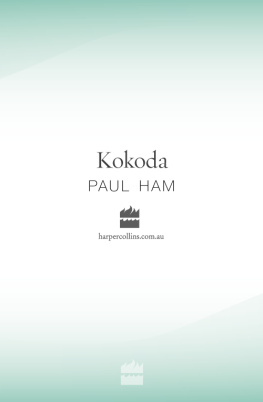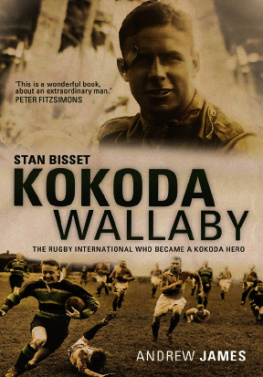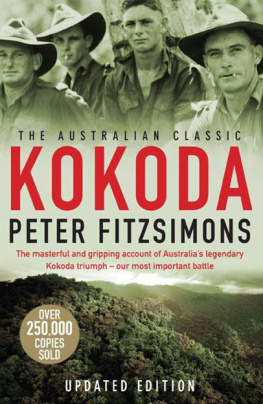Brian Freeman served as a captain with the Special Forces of the Australian Army. Since 2000 he has worked running treks along the Kokoda Trail and adventure programs around the world. He lives in Brisbane.
First published 2012 in Macmillan by Pan Macmillan Australia Pty Ltd
1 Market Street, Sydney 2000
Copyright Brian Freeman 2012
The moral right of the author has been asserted.
All rights reserved. This publication (or any part of it) may not be reproduced or transmitted, copied, stored, distributed or otherwise made available by any person or entity (including Google, Amazon or similar organisations), in any form (electronic, digital, optical, mechanical) or by any means (photocopying, recording, scanning or otherwise) without prior written permission from the publisher.
This ebook may not include illustrations and/or photographs that may have been in the print edition.
National Library of Australia Cataloguing-in-Publication data:
Freeman, Brian.
The lost battlefield of Kokoda / Brian Freeman.
9781742611181 (pbk.)
Subjects: World War,
1939-1945BattlefieldsPapua New Guinea.
Kokoda Trail (Papua New Guinea)
940.5426
EPUB format: 9781743347928
Online format: 9781743347904
Typeset by Midland Typesetters Australia
Cover design by Deb Parry, Parry Designs
Map by Laurie Whiddon, Map Illustrations
Love talking about books?
Find Pan Macmillan Australia online to read more about all our books and to buy both print and ebooks. You will also find features, author interviews and news of any author events.




To my father-in-law, Roger Gray,
for teaching me about family and business.
FOREWORD
W e have touch-points in our lives. My first touch-point with Brian Freeman came in 1999 when we worked together at a major military headquarters in Brisbane. Remembering Brian in those days, I recall him as a very cheerful, highly energetic and professional junior officer with a lot of previous service in the ranks, which gave him an obvious maturity as a counterpoise to his exuberance. He even asked me out on a date once (read the book)! Part of this touch-point was that great modern Australian military adventure to East Timor the same year. Dont think Im trivialising that very serious commitment and challenge but for professional military men and women, all such challenges are adventures, and thats why we join in the first place. Brian was exactly the right stuff for our military adventure to East Timor.
Seven years later, another touch-point. Brian describes it well: a meeting in Innisfail among the rubble to discuss an aspect of his new life as an adventure expedition leader. I must say when I heard how his life had drawn him into this new career, I wasnt at all surprised. Leading people in challenging circumstances while staying positive seemed right up his alley. But I didnt expect that the next touch-point would draw me into a sort of modern genuflection to the Australian military legend of Kokoda.
Many Australians have a strong appreciation of the importance of the Kokoda campaign in 1942. Thousands of Australians from prime ministers to Olympians to disabled men and women have undertaken the tremendously arduous pilgrimage of walking the track to experience the travails and understand the tragedies and the triumphs of the combatants and the villagers all those years ago. Few Australians will have completed the trek as many times as Brian Freeman and even fewer have written about it so engagingly and with such insights into not only the events of seventy years ago but of life on the track today.
The Lost Battlefield at Eora Creek provided that touch-point. To stand where men have fought and died seven decades beforehand, alongside Brian and his colleagues from Australia and Papua New Guinea, was to stand in a beautiful, solemn place sanctified by suffering and sacrifice. Not all that long after I returned to Kokoda to salute the arrival of a large group of wounded and rehabilitating diggers and their supporters who had walked in the footsteps of heroes. One of the most humbling experiences in this old soldiers life was to watch a magnificent young man, a double amputee, walking into the village of Kokoda having triumphed over the track. Brian tells all of this as part of his story.
I am sure you will enjoy The Lost Battlefield of Kokoda. Congratulations, Brian, not only on this wonderful story but for what you and a few friends and colleagues seek to do for the descendants of the fuzzy wuzzy angels.
Peter Cosgrove
General (Retd)
Contents

EORA CREEK: WHERE THE WATER RAN RED
I t was sheer, bloody murder.
The Nambu machine gun firing from the narrow slit of the Japanese bunker tapped out another deadly tattoo. Its innocuous nickname was the woodpecker, but it shredded rather than pecked its victims. A digger screamed as the burst of rounds punched him in the chest, tipping him into the swirling, pinking waters of Eora Creek.
Orders were barked, the wounded screamed and steam hissed from the woodpeckers barrel as it traversed left and right, impatiently searching for new blood through the curtain of teeming rain. Thirteen Australian soldiers had died in the suicidal bid to cross the creek. Some of them lay strewn, eviscerated on the rocky banks; others had been washed away between the massive water-blasted boulders that studded the fast-flowing white waters of the creek.
Two other machine guns raked the steep slope from their jungle eyries high on the north side of the creek. Adding to the din was the sinister crump of a 50-millimetre Knee mortar bomb leaving its tube somewhere high in the jungle. Men cowered and tensed as the bomb arced high and unseen, and waited for the inevitable blast. Most terrifying of all was the freight-train screech of an artillery shell from one of the Japanese field guns sited on the high ground above their side of the water. The Jap guns were so close and the countryside so steep and thick with jungle that, instead of being pointed upwards so they could lob their shells high into the air and reach distances of up to a couple of kilometres, their crews had sighted the barrels to fire on a flat trajectory, line-of-sight bearing. They were pointed directly at the Australians, particularly at the open ground on which the diggers had to assemble before they could even attempt a crossing of Eora Creek. The guns had picked off some of the 16th Brigade boys already. At this range they could hardly miss.
As the next men in the platoon waited for their turn to die, hands gripping the slick, wet wood of their .303s hard to stop their fingers shaking, their astonishment and dissent rose like a ripple up the military chain. These were sun-tanned, hardened warriors whose mettle had been tested in bloody battles and fighting retreats in mainland Greece and on the island of Crete. They werent cowardly, but nor were they ready to be sacrificed like their fathers generation, forced to march obediently to certain slaughter in a frontal assault on a well-sited machine gun.

